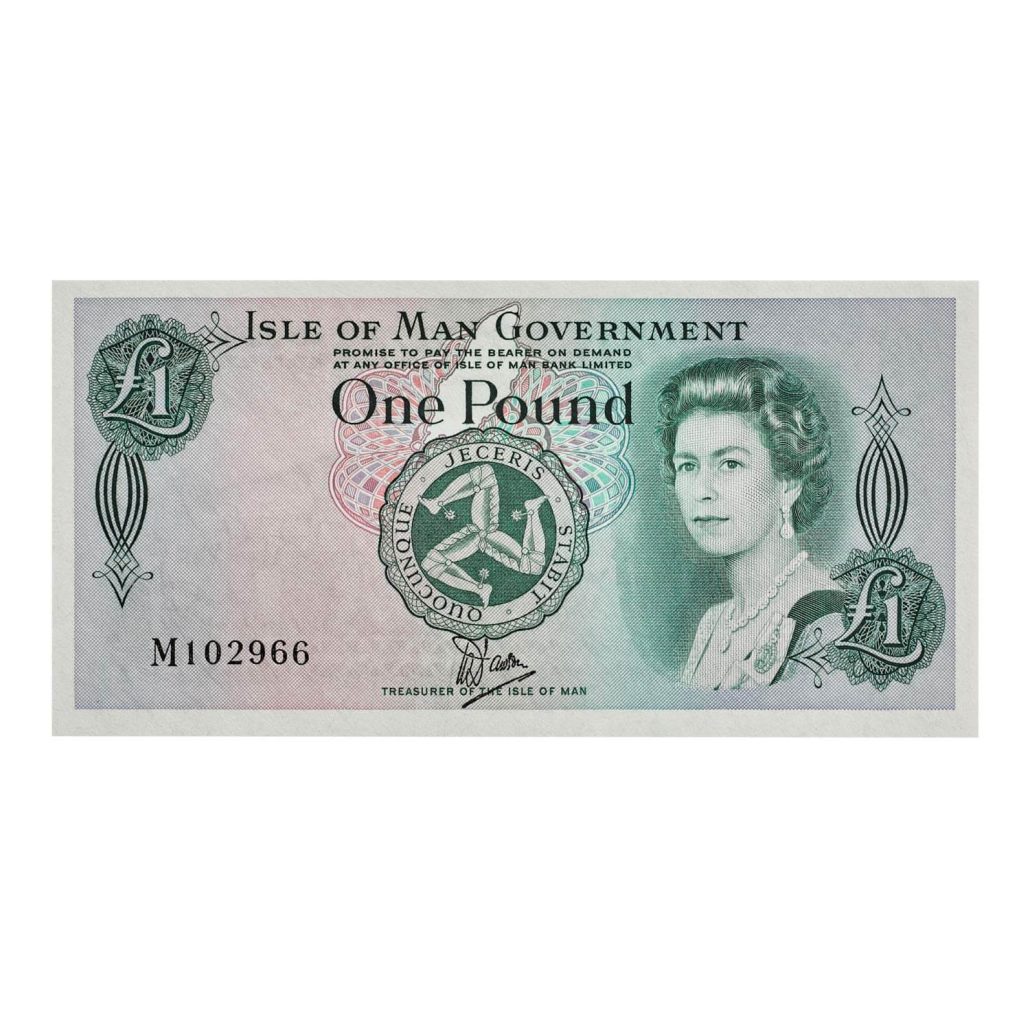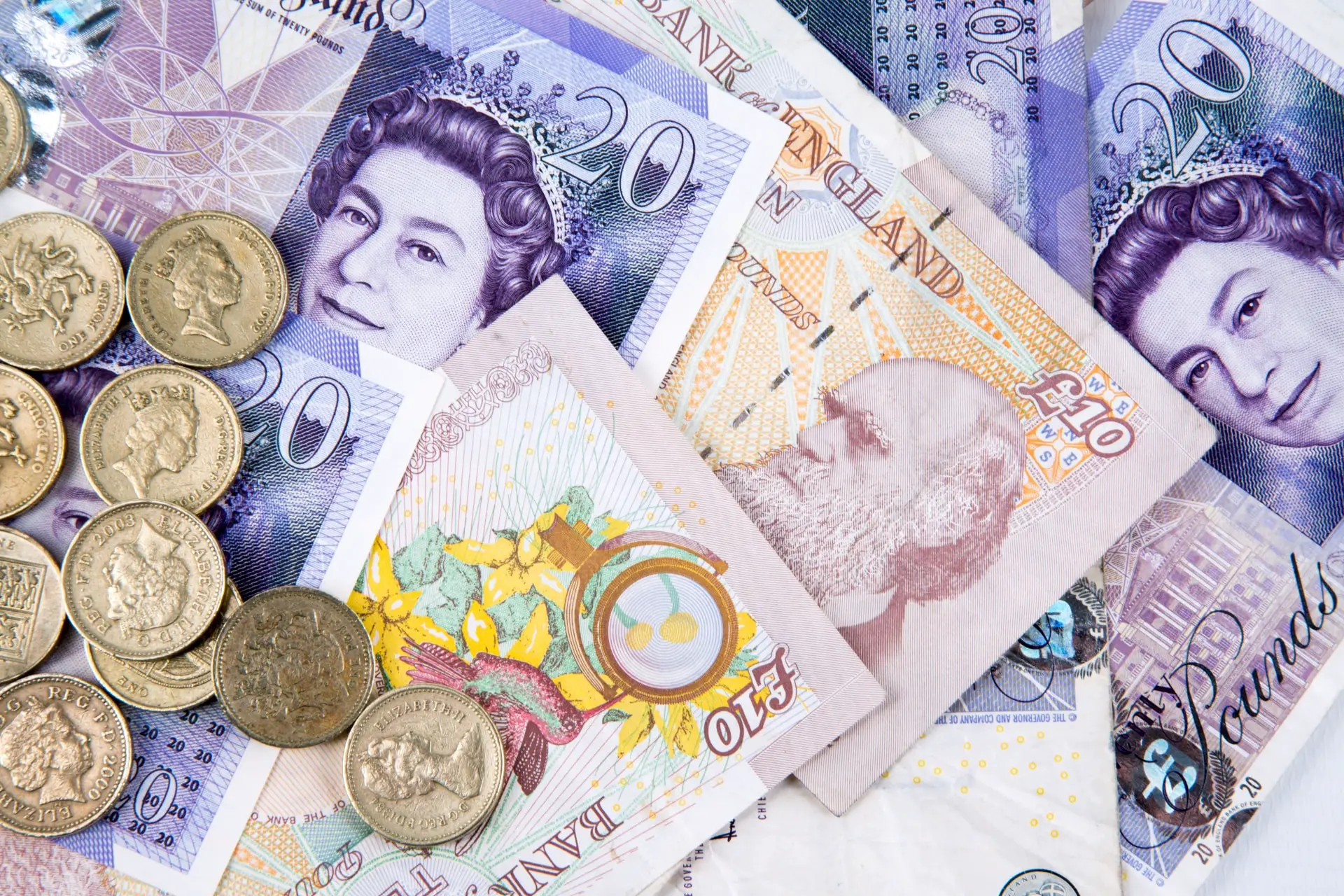The Isle of Man currency, specifically the 1990 Isle of Man £1 banknote, presents an intriguing facet of currency collectibles that intertwines with the United Kingdom’s rich numismatic history. This denomination, part of the Isle of Man bank’s decimalized system since 1971, epitomizes the unique legal tender status shared between the Isle of Man and the United Kingdom.
Exploring the historical context and design features of this banknote offers insights into the factors influencing collectible banknotes’ value, including denominations and the broader context of Isle of Man money. The forthcoming analysis sheds light on its current market value and collectibility, presenting a comprehensive view of this distinctive monetary artifact.
The Historical Context of the 1990 Isle of Man £1 Banknote
The Isle of Man £1 banknote, first established in 1961, marked a significant evolution in the island’s currency system, transitioning from a diverse array of banknotes issued by various entities to a more standardized form of currency. This move was pivotal in streamlining the monetary system on the island, which had seen a plethora of banks issuing their own £1 notes since as early as 1811. Notably, banks such as the Douglas Bank Co., Isle of Man Bank, and Dumbell’s Banking Company, among others, played integral roles in the pre-decimalization era, each contributing to the rich tapestry of Isle of Man currency history.
- Pre-Decimalization Era (1839-1971):
- Douglas Bank Co. (1811)
- Isle of Man Bank (1829)
- Dumbell’s Banking Company (1875-1878, 1891-1899)
- Manx Bank (1882-1900)
- Isle of Man Banking Company (1899)
- Post-Decimalization Era (1971-Date):
- Isle of Man Bank (1927, 1961-1967)
- Barclays Bank (1924-1960)
- Isle of Man Government (1972-1976, 1983, 1990-2009)
The transition to decimalization in 1971 brought about a significant shift in the physical attributes and issuance of the £1 notes, with dimensions becoming more standardized and the design undergoing various iterations to reflect the changing times. Unique designs, such as the 1790-1799 Castle Rushen note and the 1979 commemorative note for the Millennium of the Manx Parliament, underscore the cultural and historical significance embedded in these banknotes. Despite the eventual replacement of the £1 note by coins post-decimalization, the continued issuance of banknotes underscores their enduring legacy and collectibility, with the 1990 Isle of Man £1 banknote printed by Bradbury Wilkinson and Company in the United Kingdom, being a notable collector’s item no longer in circulation.
The Design and Features of the 1990 £1 Isle of Man Banknote
The 1990 Isle of Man £1 banknote is a collector’s gem, primarily due to its distinctive design and features that encapsulate the essence of the Isle of Man.
- Front Design Highlights:
- Portrait of Queen Elizabeth II: The note prominently features an uncrowned portrait of Queen Elizabeth II, symbolizing her role as the Lord of Mann. This depiction is unique as it shows the Queen without her crown, a rare design choice for Commonwealth banknotes.
- Triskelion Motif and Map: Accompanying the Queen’s portrait is the iconic triskelion motif, a symbol deeply rooted in Manx heritage. A detailed map of the Isle of Man further enriches the front design, inviting a closer look at the island’s geography.
- Underprint and Watermark: A purple underprint sets a regal backdrop for the design elements, while the triskelion watermark adds an extra layer of security and aesthetic appeal.
- Reverse Design and Security Features:
- St John’s Church on Tynwald Hill: The reverse side captivates with an aerial view of St John’s Church on Tynwald Hill, a site of significant historical and cultural importance to the Isle of Man.
- Security Enhancements: The note boasts a solid security thread and a pioneering holographic security strip, marking it as the first banknote in the world to feature such advanced protection against counterfeiting.
- Physical Characteristics:
- Dimensions and Material: Measuring 128 x 65 mm, the banknote strikes a balance between durability and portability. It is crafted from a hybrid substrate, making it the first to be printed on Bradvek, known as ‘The Plastic Pound’ for its resilience.
- Collectibility Factors: With a grade of 67 by the Paper Money Guaranty and presented in a wallet with a certificate of authenticity, the banknote’s mint condition elevates its value among collectors.

Factors Influencing the Value of Collectible Banknotes
When evaluating the value of collectible banknotes like the 1990 Isle of Man £1 banknote featuring Queen Elizabeth II, several factors come into play, each contributing to the banknote’s market worth and desirability among collectors.
- Condition and Grade:
- Uncirculated: No signs of wear, highest value.
- Poor: Significant wear and tear, lowest value.
- Key Indicators: Centering of design, margins, ink and paper quality, presence of folds, stains, or tears.
- Rarity and Demand:
- Production and Circulation: Limited edition issues or those with fewer remaining in circulation are more sought after.
- Numista Rarity Index: For example, a rarity index of 65 indicates a higher collectible value.
- Regional Demand: Popularity can vary by location, affecting value.
- Special Characteristics:
- Errors: Misprints or anomalies can increase value.
- Signatures: Notes signed by notable figures are more valuable.
- Special Issues: Notes issued for specific events or to specific groups, like Hawaii notes or North African troops notes, hold additional value.
Understanding these factors can help collectors and enthusiasts better assess the worth of their banknotes, making informed decisions when adding to their collections or evaluating potential purchases.
Current Market Value and Collectibility
In the collectible currency market, the 1990 Isle of Man £1 banknote, featuring Queen Elizabeth II, showcases a fascinating range of values based on its condition and availability. Here’s a closer look at its market value and collectibility:
- Market Availability and Price Range:
- Uncirculated Condition (P-40b, UNC): Prices vary from $31.99 to $49.99 USD, with the quantity purchased influencing the final cost.
- eBay Listings: A circulated note starts at a bid of $120.00, while an uncirculated note is available for $20.00 plus $8.00 shipping.
- The Royal Mint: Offers the banknote in ‘About Uncirculated’ and ‘Uncirculated’ conditions for £75.00, including a banknote wallet and certificate of authenticity.
- Condition-Based Value:
- Very Good (VG): Valued at $15.
- Fine (F): Increases to $36.
- Uncirculated (UNC): Peaks at $97, showcasing the premium placed on pristine condition.
- Purchase Details:
- The Royal Mint (Product Code HISE1990BN): Currently in stock with an estimated shipping time of 7-10 days for UK orders.
- World Currency Catalog: Lists a value range of $3.00 to $45.00, highlighting the note’s fluctuation in worth.
This variance in price and availability underscores the banknote’s appeal to collectors, emphasizing the importance of condition and authenticity in determining its market value.
Conclusion
Throughout this exploration into the 1990 Isle of Man £1 banknote, we’ve delved into its significant historical context, unique design features, and the myriad factors influencing its collectibility and market value. From its inception in the pre-decimalization era to becoming a sought-after collectible, this banknote stands as a testament to the rich numismatic heritage of the Isle of Man. Its distinct attributes, such as the uncrowned portrait of Queen Elizabeth II and the use of Bradvek material, not only underline its aesthetic and cultural value but also bolster its standing in the collectible currency market.
The examination of this banknote illuminates the broader implications of collectibility, condition, and rarity within the numismatic community. It invites collectors and enthusiasts to appreciate the intricate blend of history, design, and market dynamics that shape the value of such items. As we consider the 1990 Isle of Man £1 banknote’s journey from circulation to collectible status, it encourages a deeper appreciation for the stories encapsulated within these monetary artifacts and their enduring legacy within the panorama of collecting.

